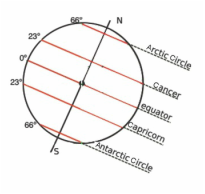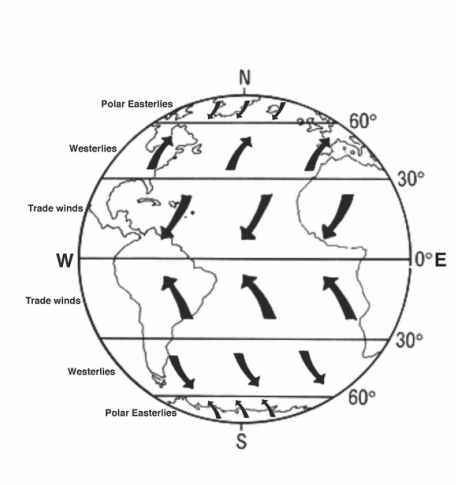|
The early explorers relied solely on wind power and were able to travel around the world! Christopher Columbus sailed 5,400 miles from the Canary Islands to the Caribbean in 36 days. How was this possible? Wind.
WESTERLIES AND EASTERLIES The area between about 30º and 60º latitude is known as prevailing westerlies because the wind comes from the west (winds are named for the direction they come from). In the area above 60º the cool air over the poles flows south and because of the Coriolis effect. It curves toward the west from the east so they are known as polar easterlies. Make your own wind pattern map
“Blow, Wind, Blow!” El Niño Making Sense of Weather." Earth Science Enterprise. National Aeronautics and Space Administration, 22 Jan. 2003. Web. 20 Dec. 2010. <http://kids.earth.nasa.gov/archive/nino/global.html>. Dunbar, Brian. "What Is the Coriolis Effect?" NASA. NASA, 10 Apr. 2008. Web. 26 Apr. 2015. <http://www.nasa.gov/audience/forstudents/brainbites/nonflash/bb_home_corioliseffect.html>. Mercator, Peter. December Solstice Geometry. Digital image. Wikimedia Commons. Wikimedia Foundation, 14 Dec. 2011. Web. 2 May 2015. O'Connor, J J, and E. F. Robertson. "Gaspard Gustave De Coriolis." The MacTutor History of Mathematics Archive. School of Mathematics and Statistics University of St Andrews, Scotland, July 2000. Web. 26 Apr. 2015. Pearson Scott Foresman. Compass3. Digital image. Wikimedia Commons. Wikimedia Foundation, 15 Dec. 2007. Web. 26 Apr. 2015. "Seasons and Ecliptic Simulator." University of Nebraska-Lincoln. Nebraska Astronomy Applet Project/National Science Foundation, 19 Mar. 2009. Web. 8 Jan. 2016. <http://astro.unl.edu/naap/motion1/animations/seasons_ecliptic.swf>. "What Is the Coriolis Effect?" ESchool Today. ESchool Today, 2010. Web. 26 Apr. 2015. <http://www.eschooltoday.com/winds/the-coriolis-effect.html>. Wicker, Crystal. "Weather Wiz Kids Weather Information for Kids." Weather Wiz Kids Weather Information for Kids. N.p., n.d. Web. 02 May 2015. <http://www.weatherwizkids.com/weather-wind.htm>. Comments are closed.
|
Author
I often struggle to find websites with thorough explanations in simple language to help kids understand historical events or scientific concepts, so I decided to create some of my own! -Cookie Davis
Archives
March 2024
|
||||||||||||||


 RSS Feed
RSS Feed